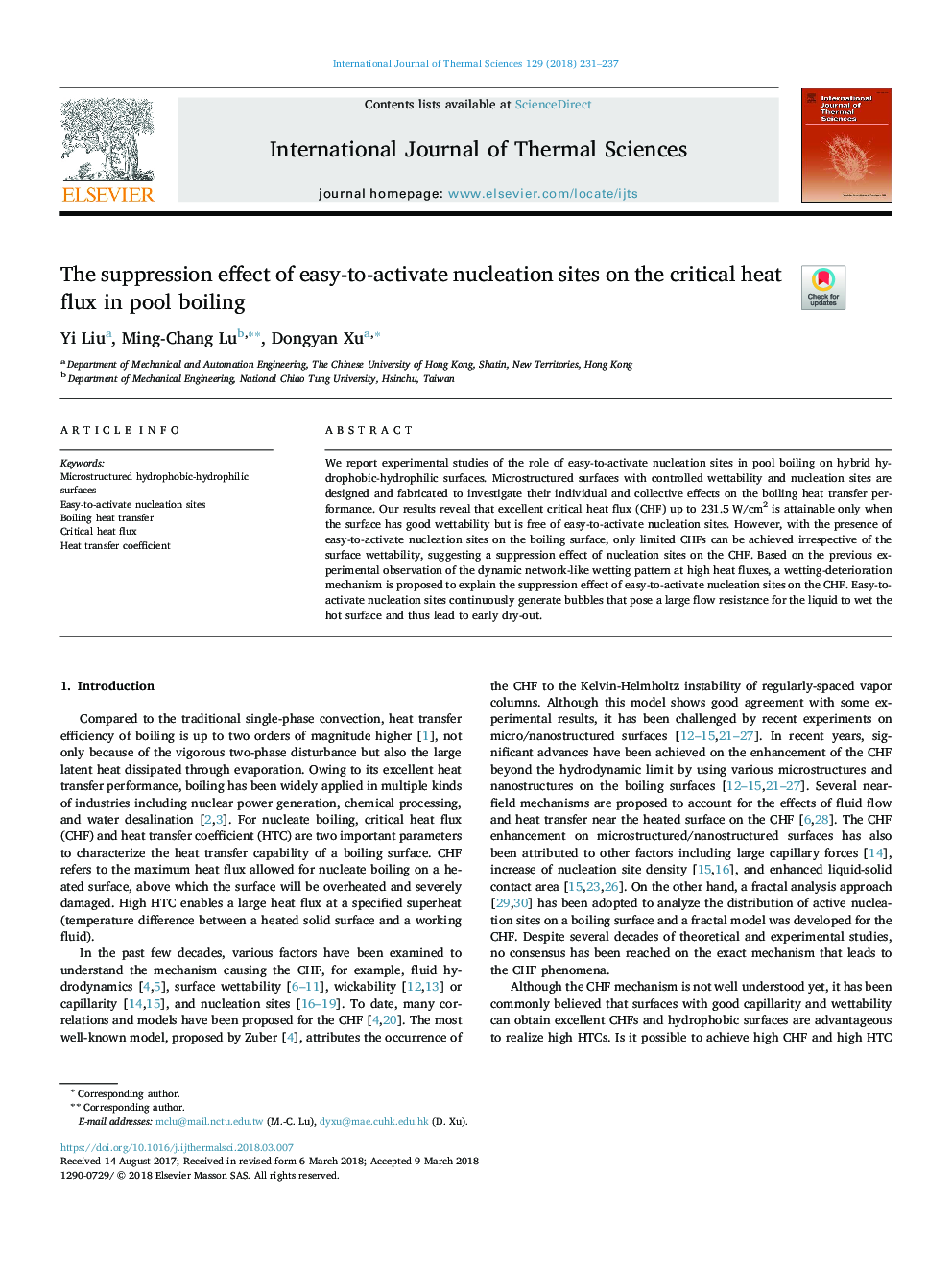| Article ID | Journal | Published Year | Pages | File Type |
|---|---|---|---|---|
| 7060703 | International Journal of Thermal Sciences | 2018 | 7 Pages |
Abstract
We report experimental studies of the role of easy-to-activate nucleation sites in pool boiling on hybrid hydrophobic-hydrophilic surfaces. Microstructured surfaces with controlled wettability and nucleation sites are designed and fabricated to investigate their individual and collective effects on the boiling heat transfer performance. Our results reveal that excellent critical heat flux (CHF) up to 231.5â¯W/cm2 is attainable only when the surface has good wettability but is free of easy-to-activate nucleation sites. However, with the presence of easy-to-activate nucleation sites on the boiling surface, only limited CHFs can be achieved irrespective of the surface wettability, suggesting a suppression effect of nucleation sites on the CHF. Based on the previous experimental observation of the dynamic network-like wetting pattern at high heat fluxes, a wetting-deterioration mechanism is proposed to explain the suppression effect of easy-to-activate nucleation sites on the CHF. Easy-to-activate nucleation sites continuously generate bubbles that pose a large flow resistance for the liquid to wet the hot surface and thus lead to early dry-out.
Related Topics
Physical Sciences and Engineering
Chemical Engineering
Fluid Flow and Transfer Processes
Authors
Yi Liu, Ming-Chang Lu, Dongyan Xu,
